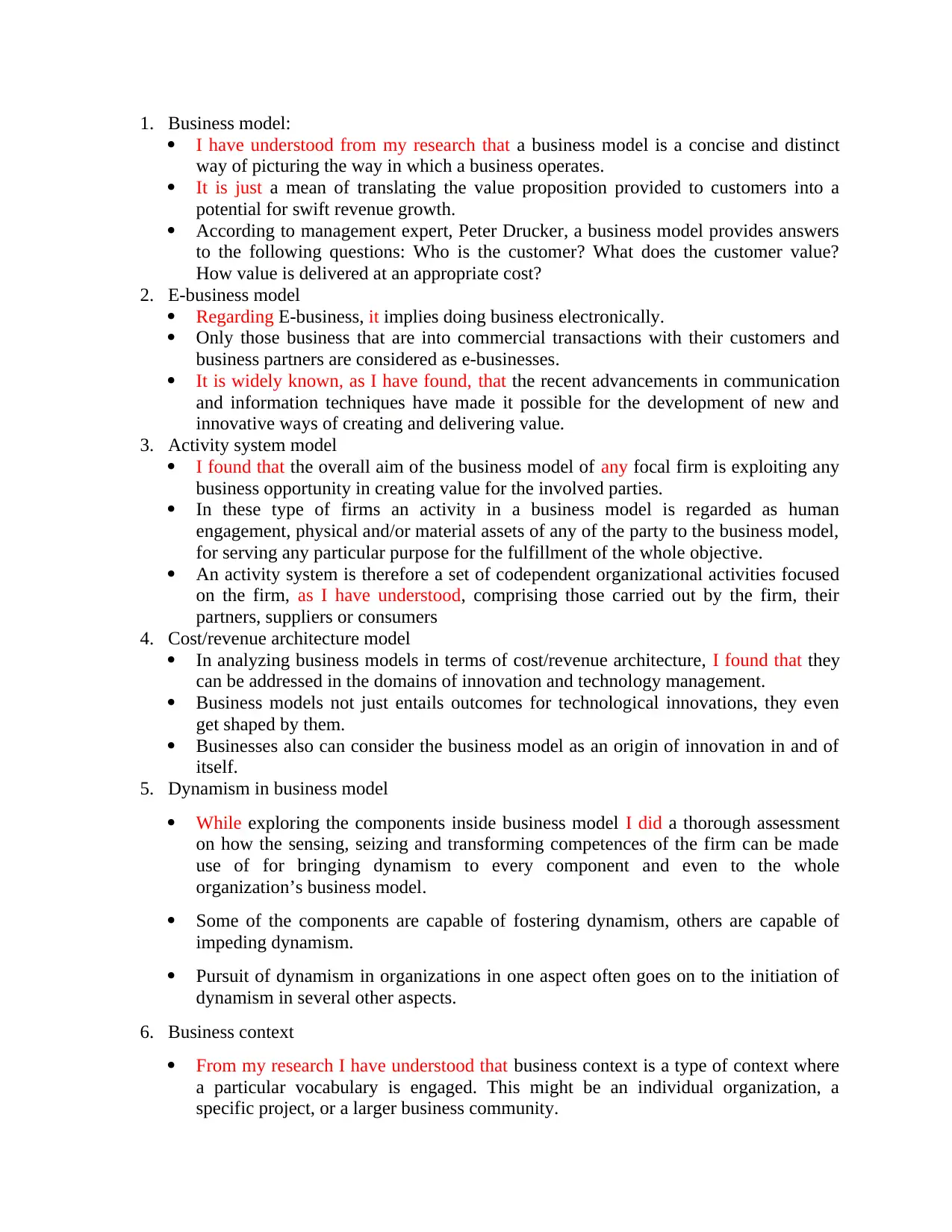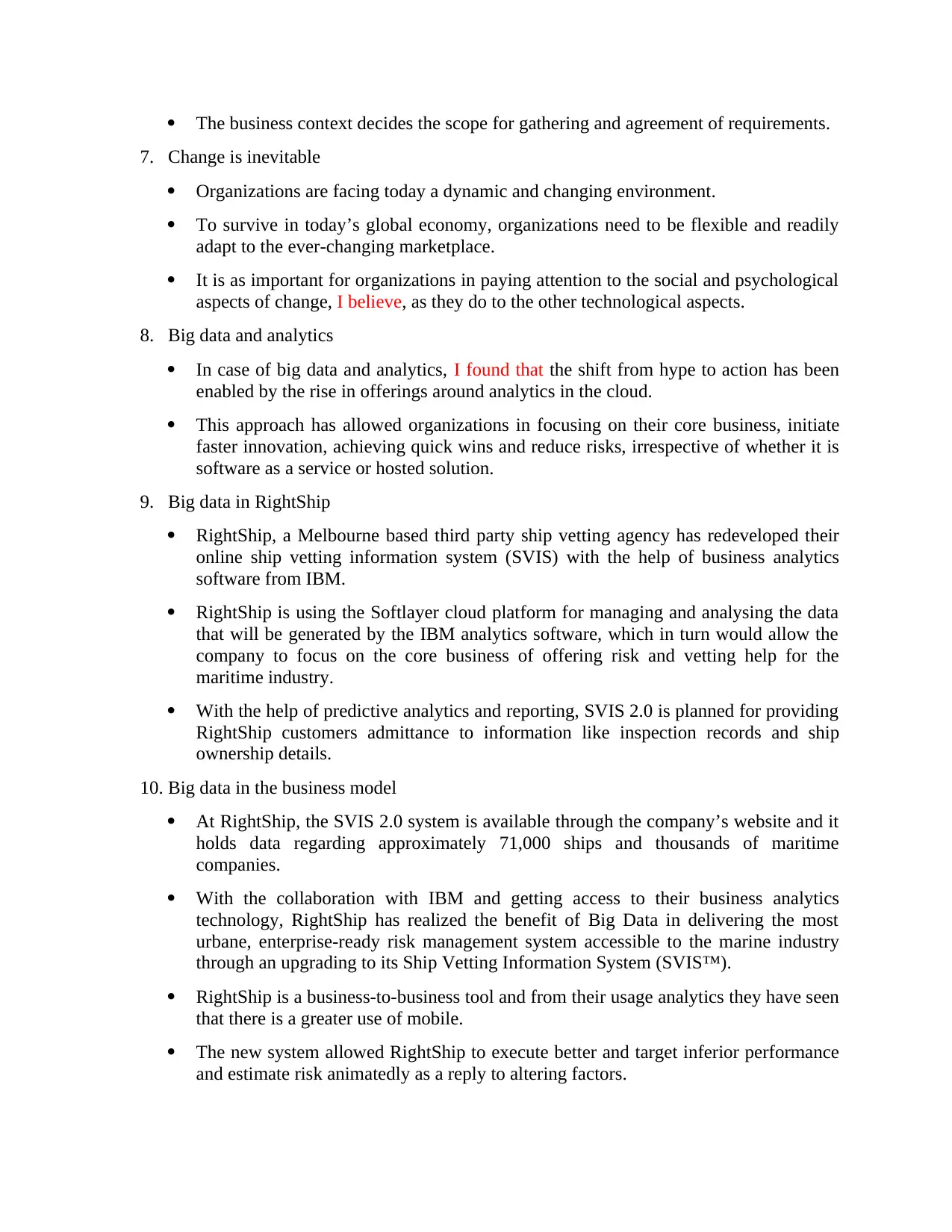Business Model Report: Analysis of Key Components and Big Data
VerifiedAdded on 2020/03/01
|2
|844
|50
Report
AI Summary
This report provides an analysis of business models, beginning with a definition and exploring various aspects such as e-business models, activity system models, and cost/revenue architecture models. It delves into the concept of dynamism within business models, examining how firms can leverage sensing, seizing, and transforming capabilities. The report also discusses the significance of business context in defining requirements and adapting to change. A significant portion is dedicated to big data and analytics, highlighting the shift from hype to action. A case study on RightShip, a ship vetting agency, illustrates the practical application of big data analytics in improving risk management and decision-making. The RightShip example showcases how big data enhances business models by providing access to critical information and enabling predictive analytics for better performance and risk assessment.
1 out of 2








![[object Object]](/_next/static/media/star-bottom.7253800d.svg)